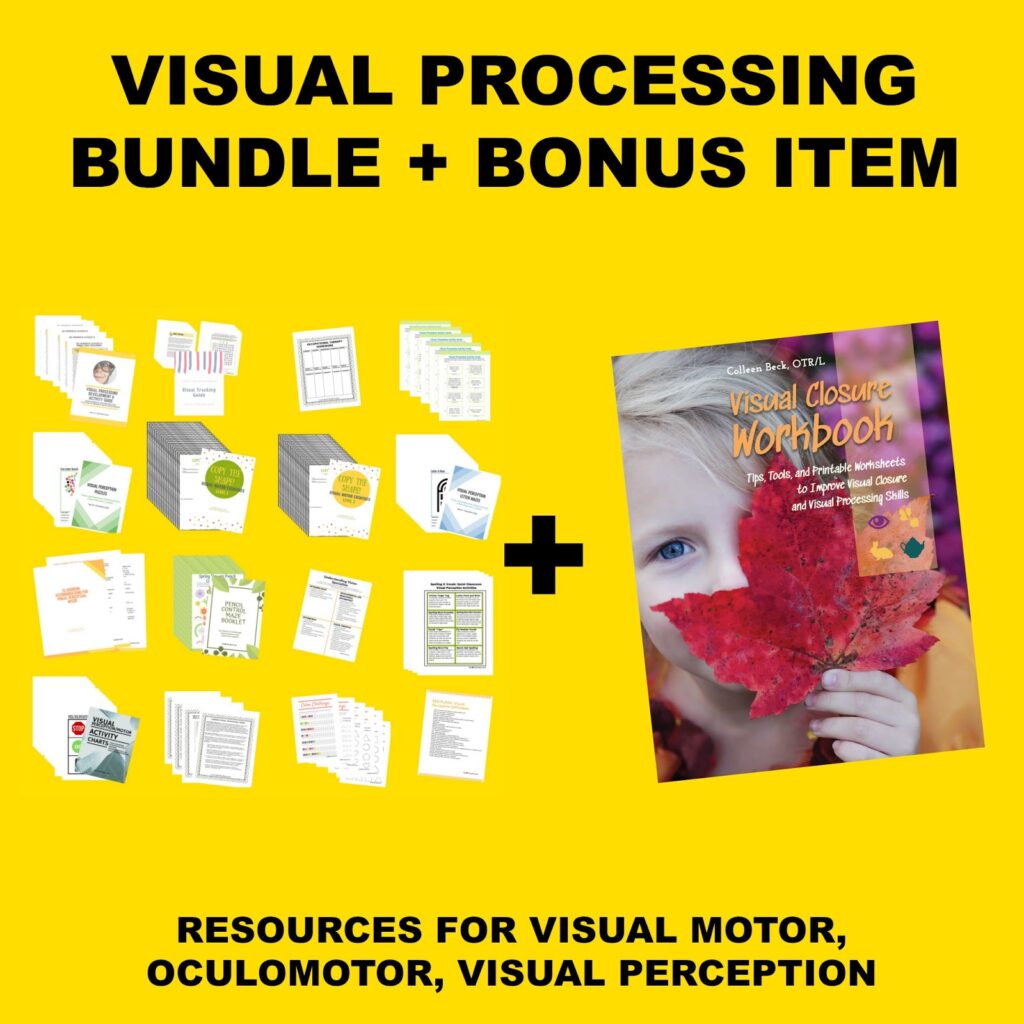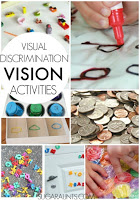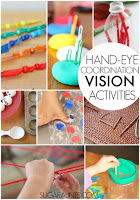Visual tracking is a skill kids need for reading, handwriting, and learning! Visual tracking activities can help kids strengthen this visual processing skill and in easy and fun ways. We made a Visual Tracking Tool that is an easy DIY occupational therapy activity. It is super easy to make and fun to play with, making it a great way to work on visual tracking skills. We shared an easy way to practice visual tracking with bottle caps not too long ago, and this visual tracking tool will be another creative way for you to work on visual tracking abilities in handwriting, reading, and math number line use.
This tool also support visual closure which is a main aspect of visual perception.
Full Disclosure: This post contains affiliate links.
What is Visual Tracking?
When there are concerns with reading, writing, copying written work, and other issues related to visual processing concerns, understanding what visual tracking means can be an important place to start.
We explained a lot about what visual tracking means here. Visual pursuits are often referred to as visual tracking. When an object moves across a person’s field of vision, their eye movements maintain fixation. Visual tracking occurs when a person’s eyes move along a line in a smooth and accurate manner. When a person moves their eyes, there are two types of eye movements that they use to gather information.
Visual pursuits (tracking) and saccadic eye movements (scanning). Visual tracking can occur with just the eyes moving or the eyes and head in a combined manner. Visual tracking depends a lot on visual attention and fatigue.
Here is more detailed information on saccades and how they impact learning.
Signs of Visual Tracking Problems
A child with visual tracking difficulties might see show of these problems in daily tasks:
Loses place when reading.
Must use finger to keep their place when reading or when copying a line of text.
Skips lines or words often when reading and copying in handwriting.
Poor reading comprehension.
Short attention span.
Moves head excessively when reading.
Homemade Visual Tracking Tool for Bilateral Integration
Using this easy tracking tool requires coordinated movements of both hands together, in coordination with the eyes. integrated movements of both arms and crossing midline is important for laterality and directionality. These are areas needed in writing and reading letters and numbers without reversals.
This visual tracking tool is a great way to practice smooth pursuits of a brightly colored object as it moves in a line across a visual field.
To make your Visual Tracking Tool, you’ll need just a few items:
Amazon affiliate links are included below.
1. Drinking Straw
2. Scissors
3. Wooden Skewer
4. Clay
(We used a single color, but you could use two different colors to extend the use of this tracking tool. Read more below.)
How to make a Visual Tracking Activity
Cut a small piece from the straw. Thread it onto the skewer. Roll a ball of clay and press it onto both ends of the skewer. Done! You can allow the clay to harden, or use it as is.
How to use this Visual Tracking Tool:
- Practice smooth visual pursuit by tilting the skewer from side to side and asking your child to follow the straw with their eyes.
- Allow your child to use the tracking tool and ask them to follow the straw with their eyes.
- Use the tracking tool in math by placing it along a number line. Tilt the skewer from side to side and when the straw stops at a number, ask your child to name the number. You can extend this activity by asking them to add or subtract numbers that the straw stops.
- Align the tracking tool under a number line and use the straw as a movable placeholder while the child counts out addition and subtraction problems on the number line.
- Use the tracking tool in reading by placing the skewer under a line of text. Move the straw along the length of the skewer as the child reads the words in the sentence.
Other ways to use this visual tracking tool:
- Hold the skewer up horizontally in front of the child. Ask them to look quickly from one clay ball to the other. You can use different colored clay for each end and say “red” for red clay and “blue” for blue clay as they shift their eyes from the red end to the blue end.
- Then, hold the skewer vertically and ask your child to quickly look from the top ball to the bottom ball.
- Finally, hold the skewer in a diagonal position and ask them to quickly look from one ball to the other.
You will love these visual tracking activities
Visual Tracking Resources
For one week, the visual processing bundle is on sale at $29.99. Grab the Visual Processing Bundle HERE.









